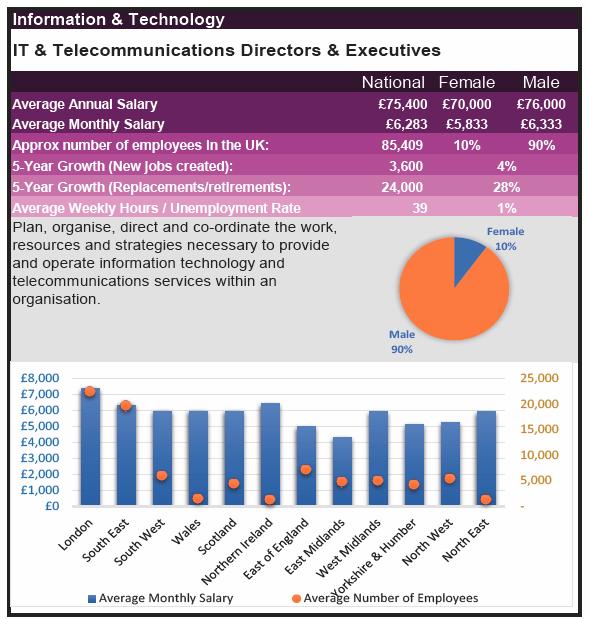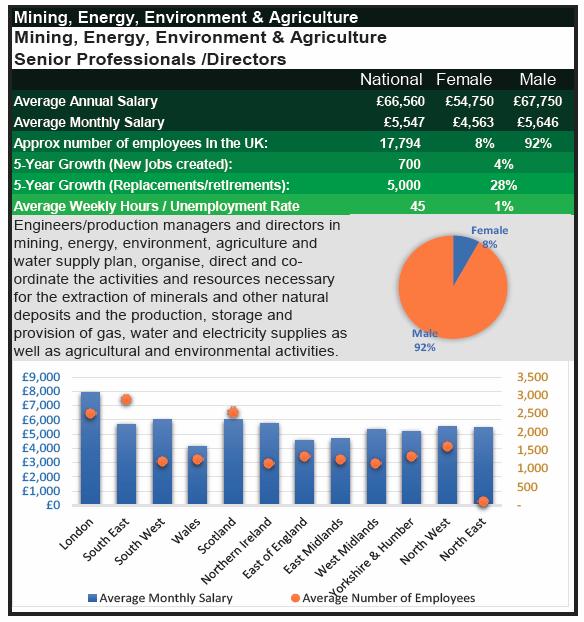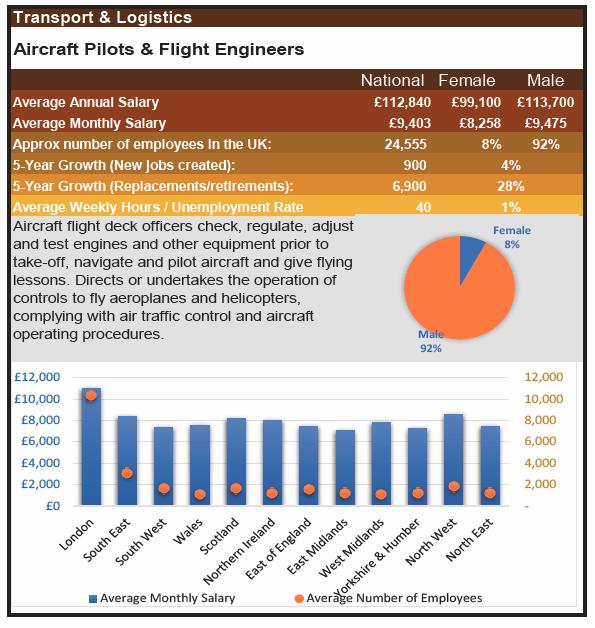
9 minute read
UK's Highest Paying Jobs
9

Advertisement
13 14




12
15 16



Is the Coronavirus pandemic getting too psychological for you?
With 2.6 billion people have been in lock- down globally, with social distancing, staying at home, some wearing face masks, longer queues at shops and constantly restraining yourself from human interaction - how are you coping? In the last month, the proportion of people who experience loneliness has risen from 10% to 24%. In some families, some have lost their jobs or have seen their finances severely af- fected. The longer the situation continues, the greater the effect on people’s mental health, including insomnia, anxiety, depression and migraines. People’s confidence in returning to normal this year is slowly decreasing from 86% in April to 55% in May.
Here are a few pointers that could help you cope during such these uncertain times:
Keep your home/room and yourself clean, organised and fresh 1

2
Avoid obsessing over endless coronavirus news coverage or social media stories
3
Try and maintain the structure of your normal daily routines
4
Create positivity within yourself. Rephrase words like “I am stuck inside” to “I can finally focus on my stuff and myself”
Managing your mental health
The outbreak of coronavirus may be overwhelming and stressful for some people, leading to fear, anxiety and strong emotions. care about, are feeling overwhelmed and showing strong signs of sadness, depression, anxiety or self harm; get in touch with some more help or advice:
116 123 (free 24-hour helpline) www.samaritans.org.uk

0300 5000 927 www.rethink.org

0300 304 7000 www.sane.org.uk


0808 802 5544 www.youngminds.org.uk

Anxiety, Depression and Mental Health Helplines
Managing your mental health
The outbreak of coronavirus may be overwhelming and stressful for some people, leading to fear, anxiety and strong emotions. If you, or someone you care about, are feeling overwhelmed and showing strong signs of sadness, depression, anxiety or self harm; get in touch with one of the following for some more help or advice:

0300 123 3393 Website: www.mind.org.uk

03444 775 774 www.anxietyuk.org.uk


0800 58 58 58 www.thecalmzone.net
Anxiety, Depression and Mental Health Helplines

www.mentalhealth.org.uk
A business plan is an essential strategic tool for any entrepreneur and business professional towards the actions that will maximise your short and long-term corporate objectives, Key points to bear in mind
Base your business plan on detailed information where possible. But do not include all the detail in the plan. Leave the detail for operational or marketing plans. Be straight to the point - focus on what the intended audience are interested in. Additional information such as assumptions, market research findings, financial information and directors’ CVs may be included in the Appendices section. Be realistic –try minimising unrealistic optimistic or ambitious revenue or cash-flow targets. These can be easily spotted by investors and they hint increased risk of mis-management of cash flows. Put any evidence to back Be professional –ensure the layout is professional, including a cover page, a contents page, executive summary, Marketing, HR, Operational and
Appendices section. Be risk-conscious –show the investors, lenders and readers your awareness of the various operational, financial and legal risks associated with are putting in place to minimise the impact of the risks .


Video Key sections of the business plan Executive Summary –a brief overview of the business, its history and/or entrepreneurs’ background, and the purpose. Products/Services –description of product/service, its key attributes, unique features, and value Industry Analysis –a summary of the industry and environment in which the business is operating. A PESTLE (Political, Economic, Social, Technolo of the major external forces affecting the business. Market and competitor analysis –key features of the market, consumer preferences, market segmentation, pricing trends, the anticipated market share and marke competitors in the market and what the company is doing to differentiating its products/services to beat the market. A brief Marketing Mix –Analysis of the 4Ps (product, price, place, promotion). Where within the competitive spectrum will the business position its the pricing policy of the company, its promotional and advertising strategy, distribution and sales channels to be used. SWOT analysis –An analysis of the strengths, weaknesses, opportunities and threats affecting the business. Explain how the company will capi opportunities, whilst seeking to neutralise or mitigate the impacts of internal weaknesses and external threats. Management and organisational structure –lay out an organisational structure of the business as well as brief outline of management’s qualifications, experience and r recruitment, health & safety as well as training strategies to be implemented. Operational plan –description of the production facilities, premises and location and how it influences the company’s operations. What are the are in place? Financial Plan –sales, profit, capital expenditure and cash-flow forecasts for the next few years. State any assumptions and give a scenario a unfavourable trading conditions.
professional. A well-documented business plan will not only help you to channel your resources objectives, but it will help you in raising funds and pitching yourself before investors and lenders.
. But do not include all the detail in the plan. Leave the detail for operational or marketing plans. focus on what the intended audience are interested in. Additional information such as assumptions, market research findings, technical details, detailed financial information and directors’ CVs may be included in the Appendices section. flow targets. These can be easily spotted by investors and lenders and can easily put them off, as management of cash flows. Put any evidence to back-up your forecasts and assumptions in the Appendices section. ensure the layout is professional, including a cover page, a contents page, executive summary, Marketing, HR, Operational and Financial Plans as well as an
show the investors, lenders and readers your awareness of the various operational, financial and legal risks associated with the venture and what measures you
Video a brief overview of the business, its history and/or entrepreneurs’ background, and the purpose. description of product/service, its key attributes, unique features, and value-enhancing benefits. a summary of the industry and environment in which the business is operating. A PESTLE (Political, Economic, Social, Technological, Legal and Ecological/Environmental) analysis key features of the market, consumer preferences, market segmentation, pricing trends, the anticipated market share and market trends. Analysis of key competitors in the market and what the company is doing to differentiating its products/services to beat the market. A brief outline of where the business positions itself within the market. Analysis of the 4Ps (product, price, place, promotion). Where within the competitive spectrum will the business position its product (high quality/expensive or value/low quality), the pricing policy of the company, its promotional and advertising strategy, distribution and sales channels to be used. An analysis of the strengths, weaknesses, opportunities and threats affecting the business. Explain how the company will capitalise on the internal strengths and external opportunities, whilst seeking to neutralise or mitigate the impacts of internal weaknesses and external threats. lay out an organisational structure of the business as well as brief outline of management’s qualifications, experience and responsibilities. Outline key HR,

description of the production facilities, premises and location and how it influences the company’s operations. What are the company’s approaches to quality and what IT systems
flow forecasts for the next few years. State any assumptions and give a scenario analysis of the position of the business in the event of
1

In the latest QS World University league tables, 10 of the top 20 universities are U.S universities. This is partly due to the billions of dollars invested in US university research and in creating a more vibrant campus life and a huge range of extracurricular activities. US higher education is popular for its distinctive flexibility and interdisciplinary format, with most students graduating with a richer mix of degree disciplines. Today’s employers are increasingly looking for graduates with global experience and an open-minded attitude, combined with a broader range of skill sets. Why study in America?
STUDYING IN THE U.S.
"There is no direct equivalent of UK’s UCAS in America" A US bachelor’s degree ordinarily takes four years to complete, hence the academic flexibility, compared to the UK’s 3 Year typical degree. Most community colleges offer two-year associate degrees, which often have direct transfer arrangements with four-year universities, making it more affordable and less rigorous in terms of entry requirements. There is no direct equivalent of UK’s UCAS in America, but about 650 US universities or colleges (as they interchangeably use these 2 terms) use the Common Application, an online portal that helps students manage their applications. 48
Whilst a few US colleges and universities do not require admissions exams, most will expect students applying to take at least one of the major standardised admission tests such as the Scholastic Assessment Test (SAT) or the Test of
English as a Foreign Language (TOEFL) or the American College Testing (ACT). These tests are primarily aimed at providing a common measure for comparing the abilities of students who come from a wide range of educational backgrounds. Test scores will be submitted alongside your application, essays, references, transcripts, work experience and other supporting information
US universities or colleges, include: - Four-year private research universities such as Harvard, Stanford or Princeton. - Four Year private technical Institutions such as MIT and California Institute of Technology. - Four-year private liberal arts colleges such as Amherst College, Wellesley College and Williams College. -Four-year public universities such as University of California, University of Florida and Michigan State University. - Two-year community/junior colleges such as Altamaha Technical College and Maryland Community College. (Please see table on the next page)




